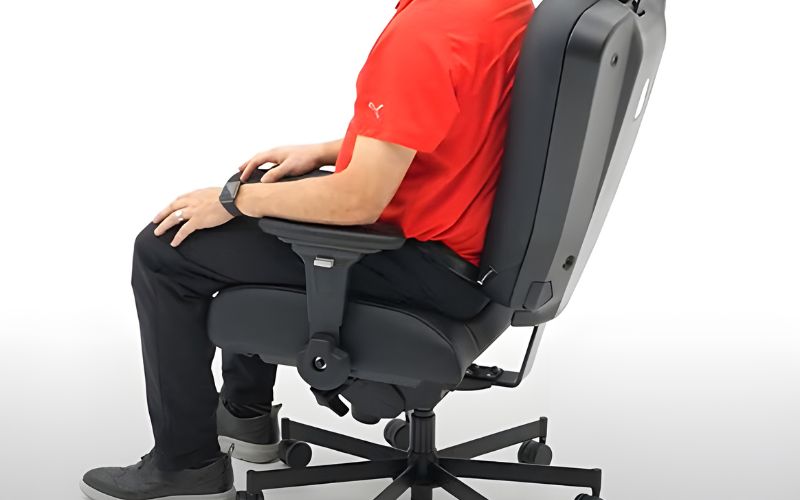Does your job require you to sit for 40 or more hours per week? If you’re like the majority of Americans, the answer is yes. Hunching over a keyboard is all too easy when sitting for prolonged periods. However, bad office chair posture can cause some not-so-welcome side effects — including tension/pain in the neck, back, knees and hips, and poor circulation. The good news is, it’s possible to undo these potential issues with proper sitting posture at a computer, exercise and a supportive office chair. If you’re wondering how to improve posture while at your desk, consider the following best practices:
1. PROPER SITTING POSTURE AT A COMPUTER.
Poor posture (e.g., slumped shoulders, protruding neck and curved spine) is the culprit of physical pain that many office workers experience. It’s crucial to be mindful of the importance of good posture throughout the workday. Aside from reducing pain and improving physical health, good posture also can boost your mood and self-confidence! Here’s how to sit properly at a computer:
- Adjust the chair height so your feet are flat on the floor and your knees are in line (or slightly lower) with your hips.
- Sit up straight and keep your hips far back in the chair.
- The back of the chair should be somewhat reclined at a 100- to 110-degree angle.
- Ensure the keyboard is close and directly in front of you.
- To help your neck stay relaxed and in a neutral position, the monitor should be directly in front of you, a few inches above eye level.
- Sit at least 20 inches (or an arm’s length) away from the computer screen.
- Relax the shoulders and be aware of them rising toward your ears or rounding forward throughout the workday.
2. POSTURE EXERCISES.
Studies recommend moving for short periods every 30 minutes or so when sitting for extended intervals to increase blood flow and re-energize the body. In addition to taking brief breaks at work, here are a few exercises to try after work to improve your posture:
- Something as simple as a 60-minute power walk can help counteract the negative effects of prolonged sitting and engage the muscles needed for good posture.
- Basic yoga poses can do wonders for the body: They encourage proper alignment by stretching and strengthening the muscles such as those in the back, neck and hips that get tense when sitting.
- Place a foam roller under your back (wherever you feel tension or stiffness), rolling from side to side. This essentially acts as a massage for your back and will help you sit up straighter at your desk with less discomfort.
3. GET A SUPPORTIVE CHAIR.
Correct posture is easier with the right chair. The best chairs for good posture should be supportive, comfortable, adjustable, and durable. Look for the following features in your office chair:
- Backrest that supports your upper and lower back, adhering to the natural curve of your spine
- Ability to adjust the seat height, armrest height and the backrest’s reclining angle
- Supportive headrest
- Comfortable padding on the back and seat
Concept Seating sells ergonomically designed supportive chairs that encourage proper body alignment in order to improve posture, reduce pain and increase productivity. Contact Concept Seating today for more information on the ideal chair for your workplace environment.





